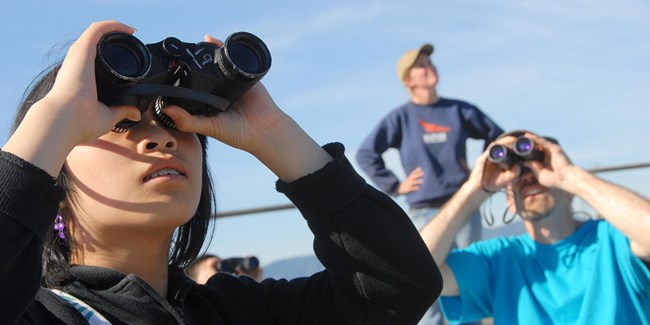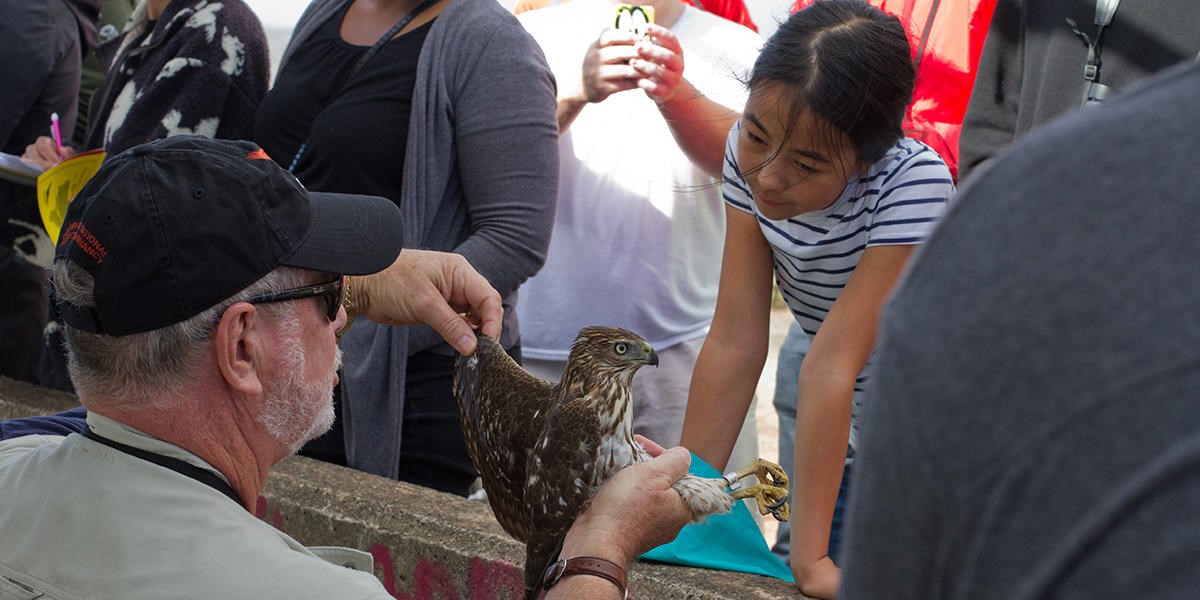
Jessica Weinberg-McClosky GGNPC Hawkwatch teams from the Golden Gate Raptor Observatory dedicate their autumn months to tallying over 19 species of migrating raptors that soar over Hawk Hill, while banders capture and release raptors in order to garner insight into their movement patterns as well as potential threats to their populations. The consistent effort of GGRO volunteers to tally raptors provides the only statewide index of rises and falls in raptor populations, and demonstrates the value of citizen science. 
Will Elder NPS Raptor MigrationJust like humans, raptors often migrate in order to seek better living conditions. During fall migration, they travel south to reach warmer wintering grounds. Hawk Hill is a heavily trafficked stop on this journey, likely because raptors generally avoid crossing over large bodies of water like the San Francisco Bay. The Marin Headlands instead offers ideal migration conditions – warm thermals of air that emit from the land allow raptors to gain altitude, updrafts off of the Headlands’ craggy terrain provides lift, and geographical features like coastlines and mountain ridges present a natural line to follow during migration. Hawkwatchers can see more than 1,000 birds in just 6 hours of spotting from Hawk Hill. Among these birds, the most common visitors are turkey vultures, red-tailed hawks, Cooper’s hawks, and sharp-shinned hawks. 
Jessica Weinberg-McClosky GGNPC Threats to RaptorsGGRO aims to inspire the preservation of California raptor populations, and hawkwatching efforts alert raptor ecologists of population declines as they occur. Raptors are faced with numerous threats, including poisons, collisions, and habitat loss. You can help by avoiding rat poison and waiting to trim trees until the nesting season has passed in late fall. 
Phoebe Parker-Shames GGRO Get Involved
|
Last updated: April 24, 2022
